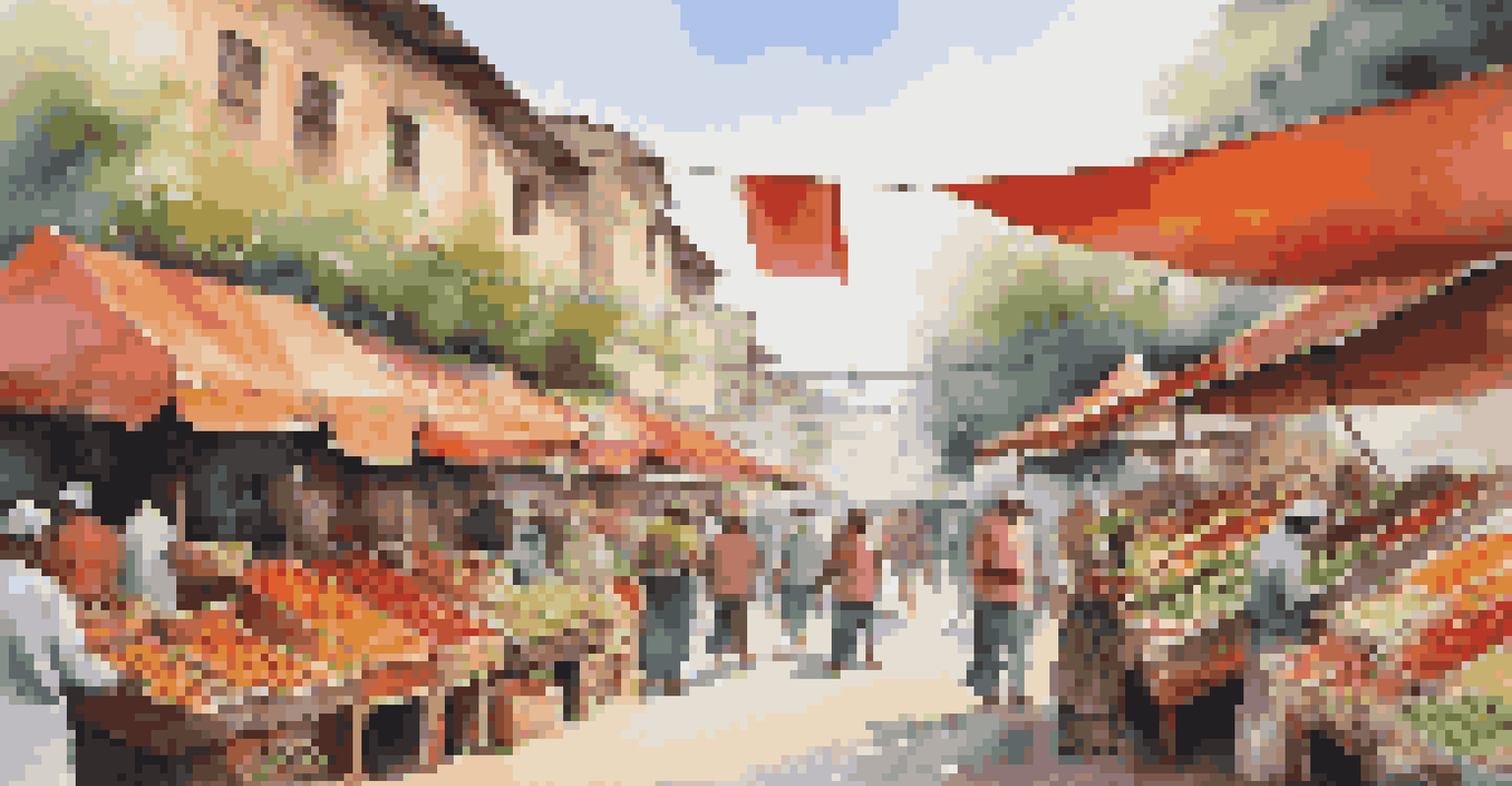Exploring Different Genres in Travel Writing

Understanding the Essence of Travel Writing
Travel writing is more than just recounting journeys; it’s a way to share experiences and insights from different cultures. It can evoke emotions, inspire wanderlust, and provide practical advice for fellow travelers. By weaving personal narratives with factual information, writers create a tapestry that connects readers to far-off places.
Travel is the only thing you buy that makes you richer.
At its core, travel writing captures the spirit of adventure and discovery. It allows writers to express their unique perspectives, often highlighting the beauty and challenges of exploring new destinations. This genre not only informs but also invites readers to dream about their next getaway.
Whether it’s a bustling city or a serene landscape, the goal is to transport the reader there, igniting their imagination. This immersive experience is what makes travel writing a beloved genre among both writers and readers alike.
The Informative Travel Guide Genre
Informative travel guides are like roadmaps for explorers, providing essential details about destinations. They typically include tips on where to stay, eat, and what to see, making them invaluable for those planning trips. These guides aim to equip readers with knowledge that enhances their travel experiences.

Writing in this genre requires thorough research and the ability to present information in an engaging way. Readers appreciate practical advice, insider tips, and cultural insights that can help them navigate unfamiliar territories. It's all about making the travel process smoother and more enjoyable.
Travel Writing: More Than Journeys
Travel writing combines personal experiences with factual insights, creating a rich tapestry that connects readers to diverse cultures.
A great example would be a guidebook that not only lists attractions but also shares local stories and traditions. This blend of facts and narratives enriches the reader's journey, encouraging them to immerse themselves in the local culture.
Personal Narratives: The Heart of Travel Writing
Personal narratives in travel writing allow authors to share their experiences through a subjective lens. These stories often highlight the emotional and transformative aspects of travel, making them relatable to readers. By sharing their own journeys, writers can create a deeper connection with their audience.
We travel not to escape life, but for life not to escape us.
This genre often includes anecdotes that evoke feelings of nostalgia, excitement, or even challenges faced during travels. For instance, a writer might recount a missed flight that led to an unexpected adventure, illustrating how travel can often take surprising turns. Such stories remind us that the journey is just as important as the destination.
Through personal narratives, readers are not just learning about places; they are experiencing them vicariously. This connection can inspire readers to embark on their own adventures, fueled by the emotions and lessons shared by the writer.
Adventure Travel Writing: Thrill and Exploration
Adventure travel writing focuses on thrilling experiences that push the limits of exploration. Writers in this genre often recount their daring exploits, whether it's trekking through jungles or climbing mountains. The excitement and adrenaline of these adventures captivate readers, inviting them to join in on the thrill.
This genre often emphasizes the challenges and triumphs encountered along the way. For example, a writer might describe the physical and mental hurdles faced during a challenging hike, painting a vivid picture of perseverance and determination. Such stories encourage readers to embrace their adventurous spirit.
Diverse Genres of Travel Writing
From adventure and culinary to cultural narratives, each genre of travel writing offers unique perspectives that enhance readers' experiences.
Moreover, adventure travel writing often highlights the beauty of nature and the importance of conservation. By showcasing breathtaking landscapes and unique ecosystems, writers inspire readers to respect and appreciate the natural world.
Culinary Travel Writing: A Taste of Culture
Culinary travel writing immerses readers in the flavors and traditions of different cultures. This genre explores how food connects us to places and people, sharing recipes, local dishes, and dining experiences. Writers often take readers on a gastronomic journey that tantalizes their taste buds.
By detailing personal experiences at local markets or street food stalls, writers can evoke the sights, sounds, and aromas of a destination. For instance, a story about sampling street tacos in Mexico City not only describes the food but also the vibrant atmosphere surrounding it. This sensory approach makes readers feel as though they are right there with the writer.
Culinary travel writing also emphasizes the cultural significance of food, showcasing how it reflects local traditions and history. By exploring these connections, writers can provide a deeper understanding of a destination, enriching the reader's travel experience.
Cultural Travel Writing: Bridging Worlds
Cultural travel writing delves into the customs, traditions, and lifestyles of different communities. This genre goes beyond mere sightseeing, encouraging readers to engage with the local culture on a deeper level. Writers often share stories that highlight the nuances of daily life in various destinations.
For example, a writer might explore a local festival, detailing the vibrant celebrations and the stories behind them. This not only informs readers about the event but also gives insight into the values and beliefs of the community. Such narratives foster empathy and understanding between cultures.
Future Trends in Travel Writing
The evolution of travel writing is driven by technology and a demand for authenticity, pushing writers to embrace diverse voices and innovative formats.
By showcasing the diversity of human experiences, cultural travel writing enriches the reader’s perspective on the world. It encourages readers to appreciate the complexity of different societies, making travel a tool for cultural exchange.
Environmental Travel Writing: Advocating for Nature
Environmental travel writing focuses on the relationship between travel and nature, emphasizing conservation and sustainability. Writers in this genre often share their experiences in natural settings, highlighting the beauty and fragility of ecosystems. Their narratives encourage readers to reflect on their impact while exploring the world.
For instance, a writer might recount a visit to a national park, describing not only its breathtaking landscapes but also the environmental challenges it faces. This approach raises awareness about the importance of protecting our planet, inspiring readers to become more responsible travelers.

By blending storytelling with advocacy, environmental travel writing fosters a sense of stewardship. It motivates readers to engage in eco-friendly practices and consider the environmental implications of their travel choices.
The Future of Travel Writing: Trends and Innovations
The landscape of travel writing is constantly evolving, influenced by technology and changing traveler preferences. With the rise of social media, writers now have new platforms to share their stories, reaching wider audiences. This shift has also led to more visual storytelling, using photographs and videos to complement written narratives.
Moreover, there’s a growing emphasis on authenticity and inclusivity in travel writing. Readers are seeking diverse voices and perspectives that reflect the complexities of travel experiences. This trend encourages writers to share stories that resonate with a broader audience, highlighting underrepresented cultures and viewpoints.
As we look to the future, travel writing will continue to adapt, embracing new formats and themes. This evolution not only enriches the genre but also enhances the reader's experience, making travel writing more engaging and relevant than ever.